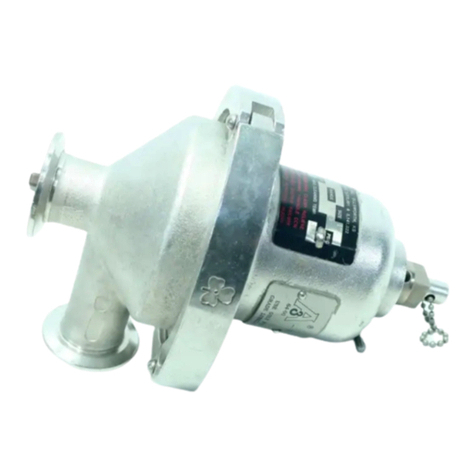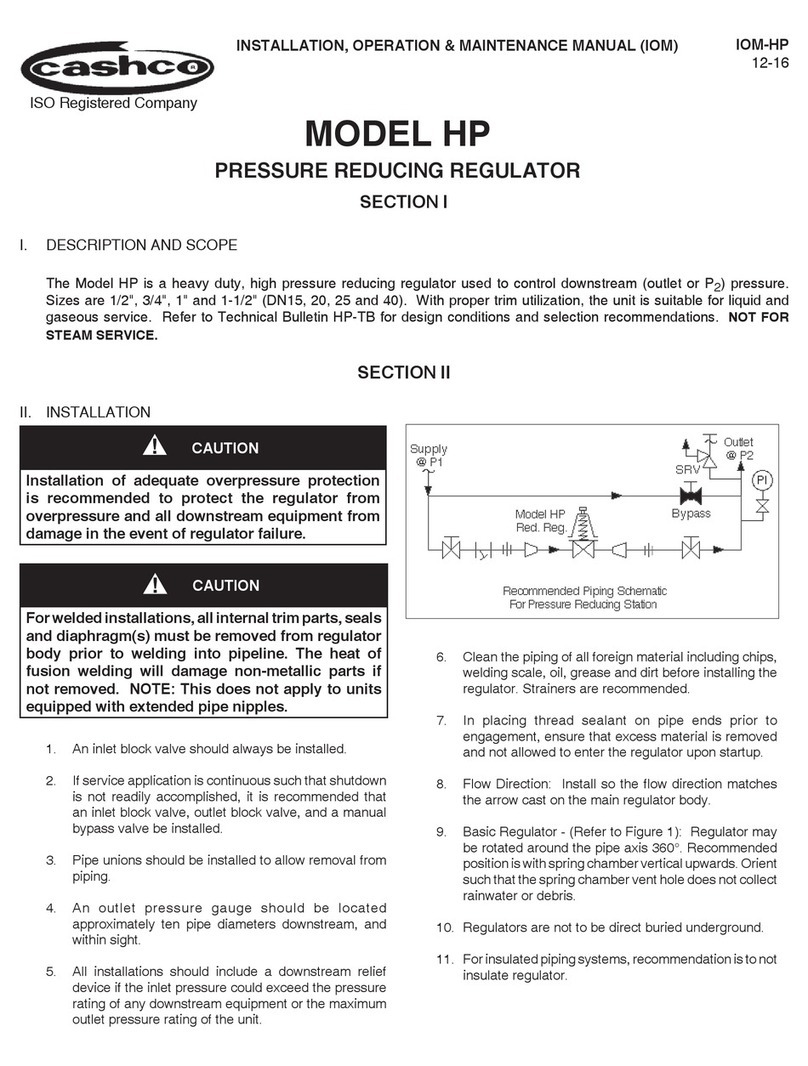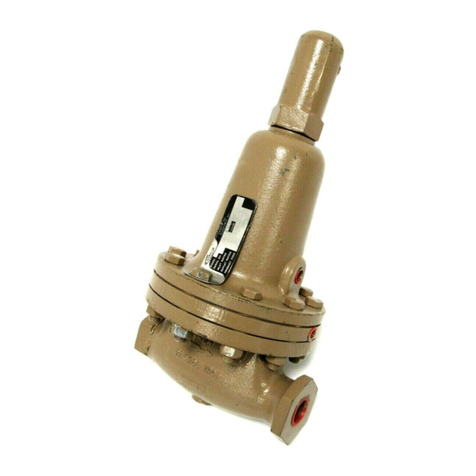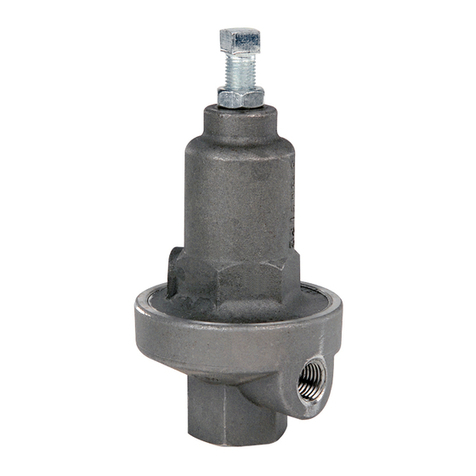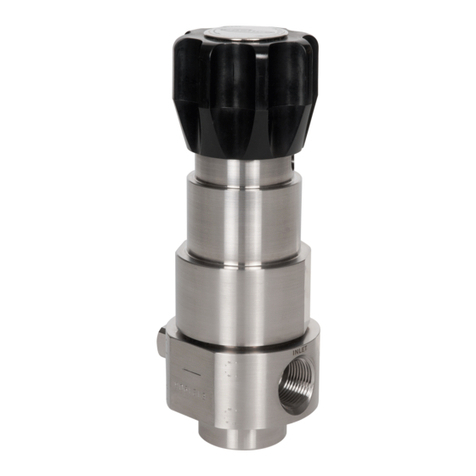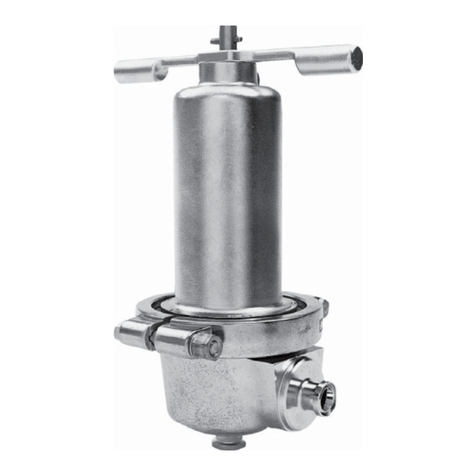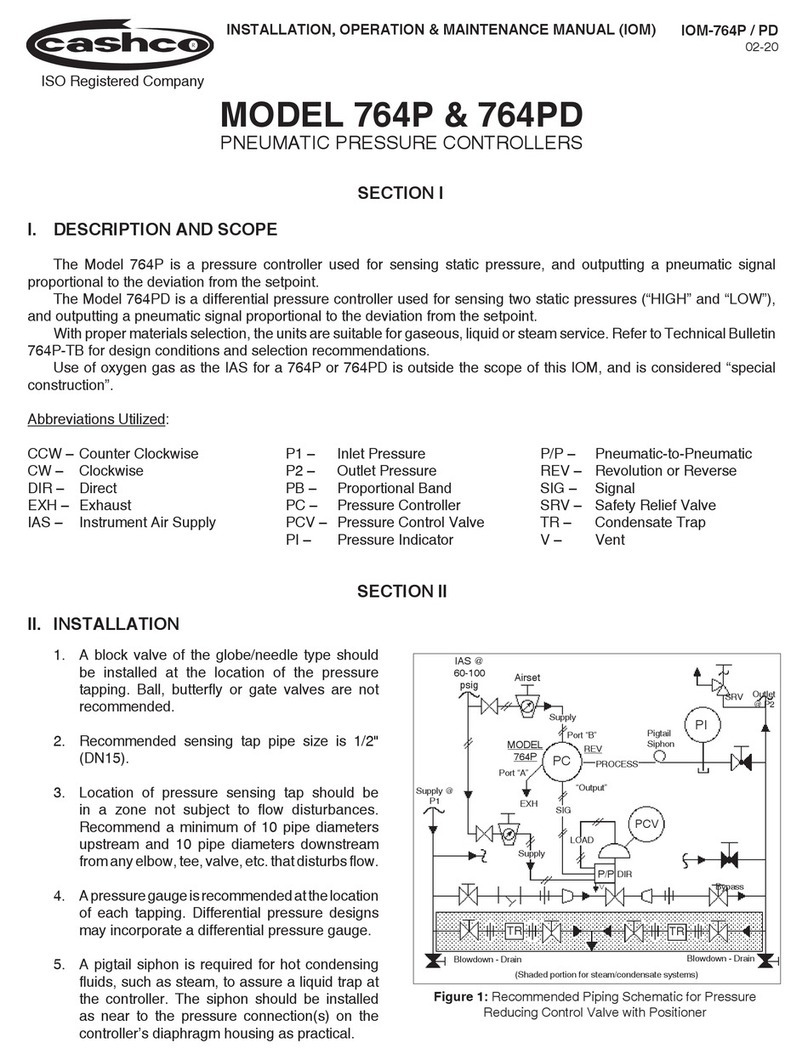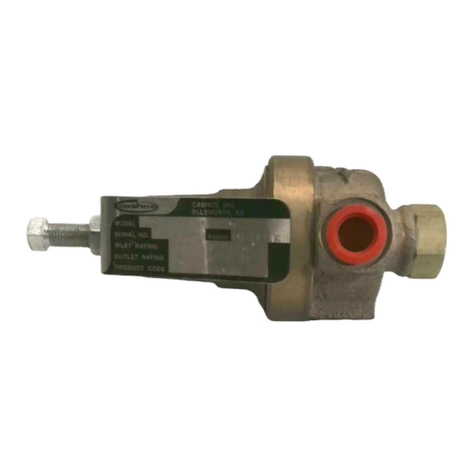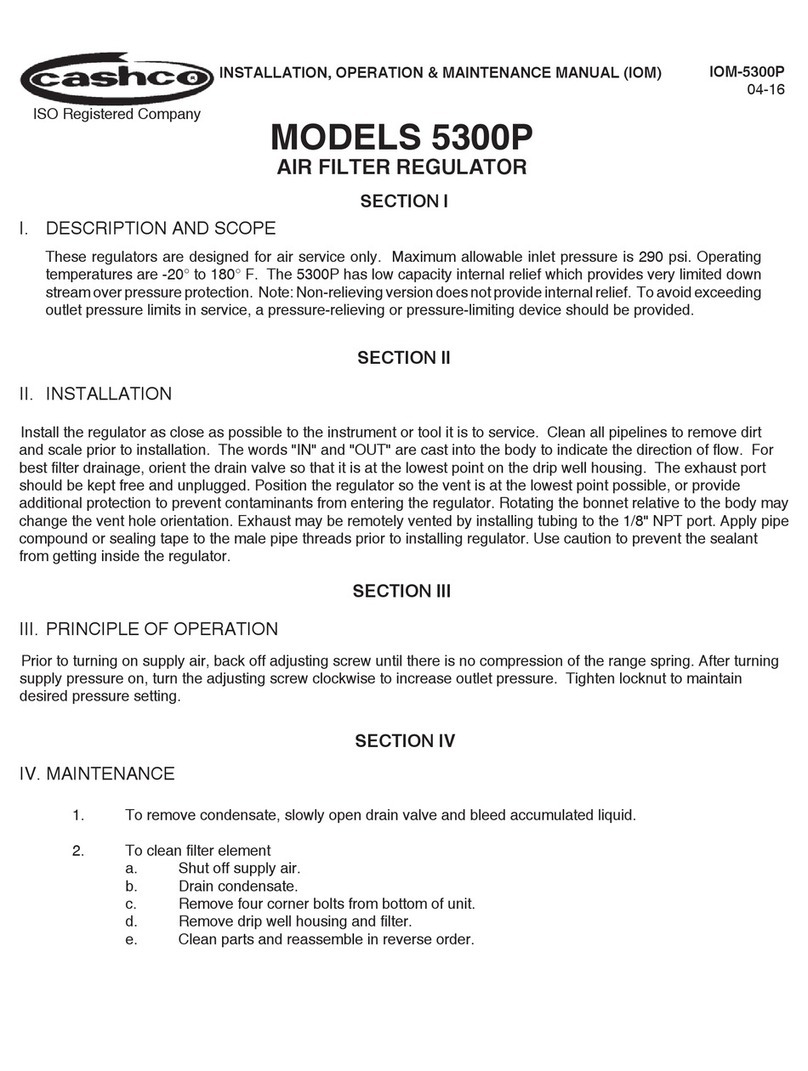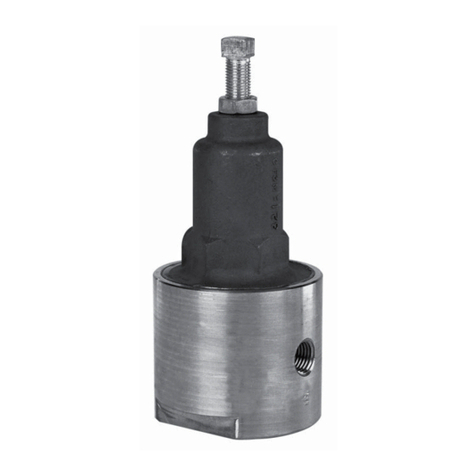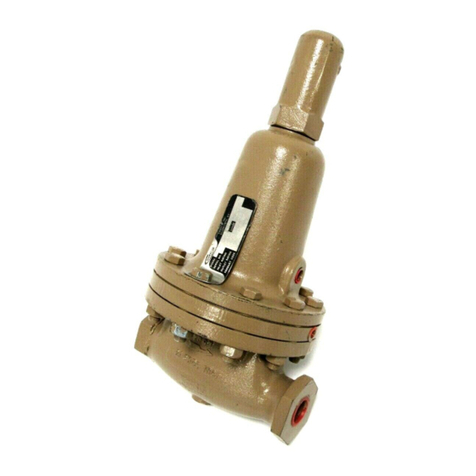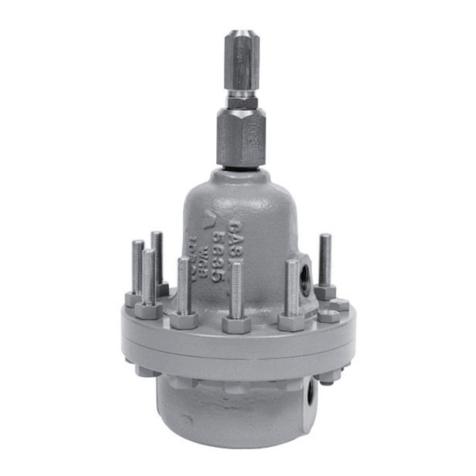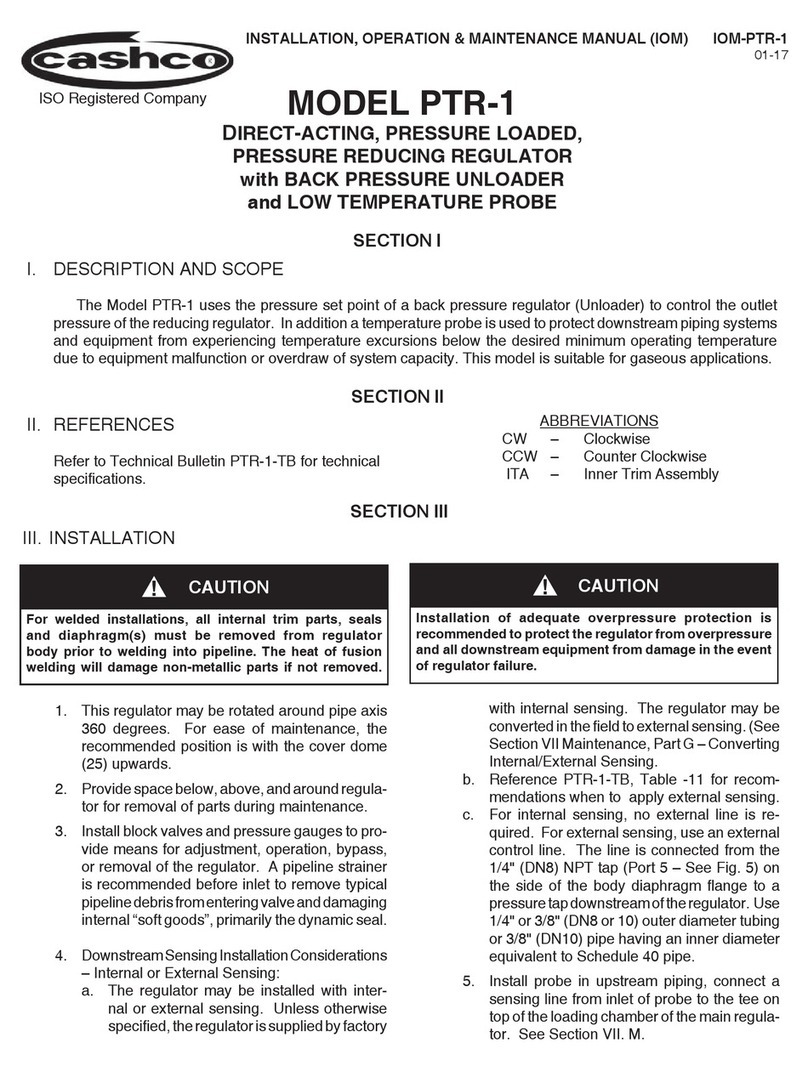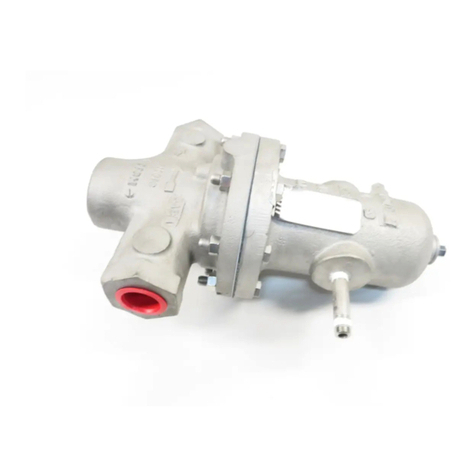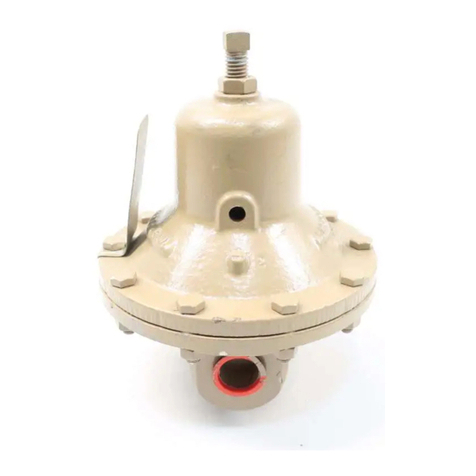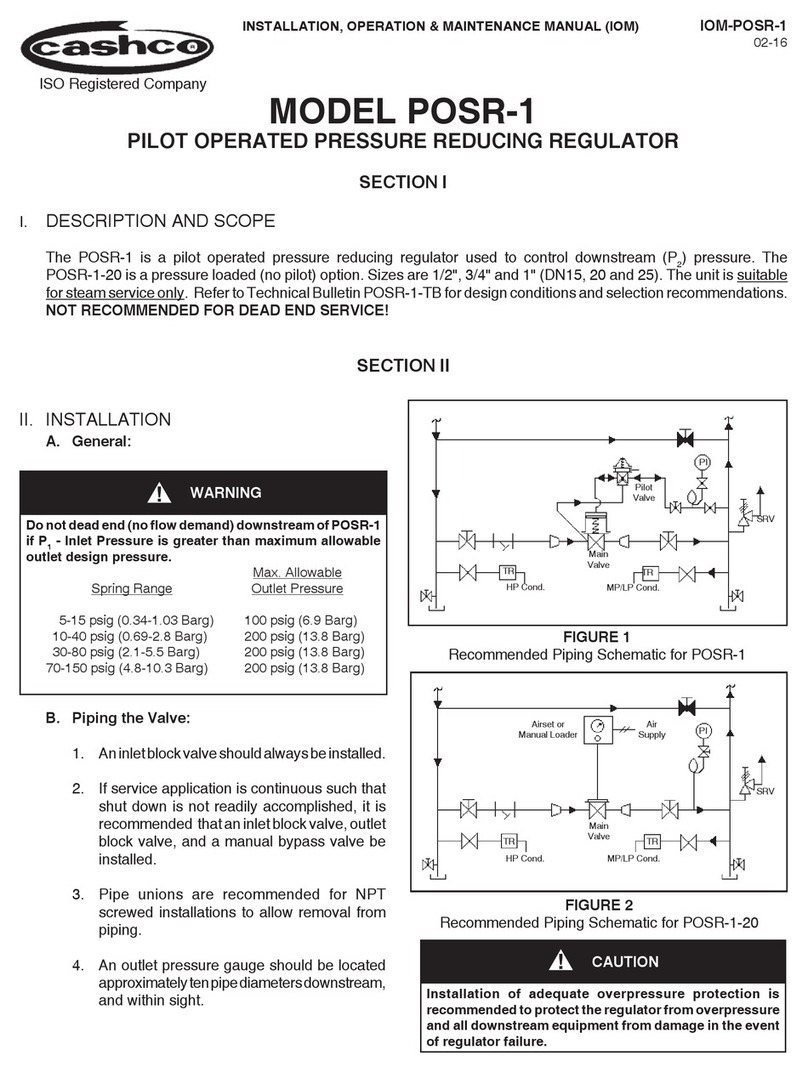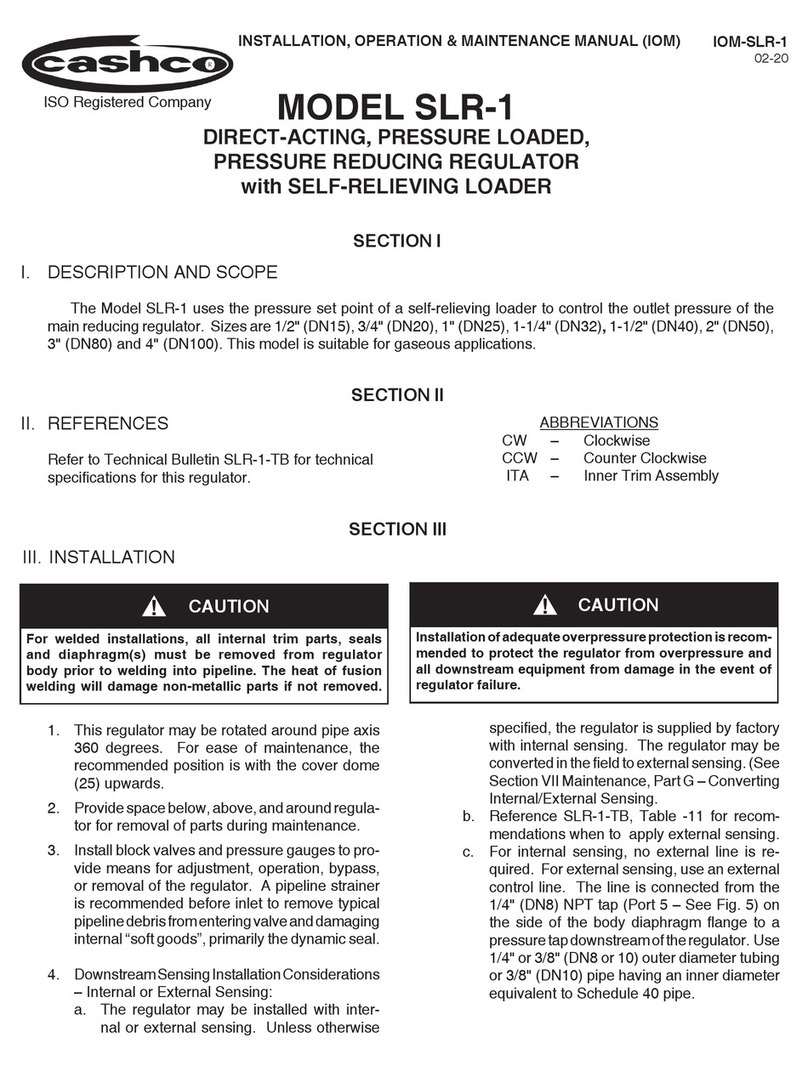
4 IOM-8310HP-DIFF
NOTES: a. Not removing the pusher plate (17) or
rotating the valve plug assembly (12) will provide
performance equal to original factory performance
when diaphragm(s) (20) is replaced with a like
diaphragm(s) (20). Refer to Section VI.C, steps
12 and 13 for correct diaphragm setting if pusher
plate (17) or stem lock nut (19) is removed, or valve
plug assembly (12) is rotated.
b. Instructions hereafter will refer to: The
-1+6 single diaphragm construction. (The -1+8
diaphragm construction is similar to the 1+6, with
the exception of a second set of diaphragms, a
body spacer (25) and a diaphragm spacer (26)).
Instructions for composition soft diaphragm
applies only to -1+6 option).
9. Remove diaphragm gasket (21) diaphragms (20
and pusher plate gasket (18). Clean gasket sealing
surfaces thoroughly.
10. Apply Federal Process Co. PLS-2 (or equivalent) to
both sides of pusher plate gasket (metal diaphragm
only). For composition diaphragm, apply a 1/8"
continuous bead of Dow/Corning RTV 732 (or
equivalent) around the center hole on the underside
of diaphragm.
11. Install new diaphragm gasket (21) on diaphragm
case (14) flange and new pusher plate gasket (18)
on pusher plate. NOTE: No gaskets utilized with
a composition (soft) diaphragm).
12. Position new diaphragms (20) over threaded end
of valve plug assembly (12). Align with bolt holes
on diaphragm case (14). Install o-ring (53).
13. Ensuring that the curved outer rim side of the
pressure plate (22) rests against the diaphragm
(20) directly, place the pressure plate over threaded
end of the valve plug assembly (12).
14. Apply Loctite 242 (or equivalent) to threads of
pressure plate nut (24) and Install pressure plate nut
on threaded end of valve plug assembly (12) and
tighten to a torque value of 75-80 Ft-lbs (101-108
Nm) for metal diaphragm, or 30-35 Ft-lbs (40-47 Nm)
for composition diaphragm. Maintain alignment of
match marks on the valve plug assembly (12) with
second match mark on diaphragm case (14) flange.
NOTE: Use two flange bolts (29) to keep multiple
diaphragms' (20) bolt holes properly aligned while
tightening pressure plate nut (24). DO NOT USE
FINGERS TO HOLD DIAPHRAGMS (20) DURING
TIGHTENING OF PRESSURE PLATE NUT.
15. Set range spring (28) on retainer hub of pressure
plate (22).
16. Place multi-purpose, high temperature grease into
depression of spring button (27) where adjusting
screw (32) bears. Set spring button (27) on to range
spring (28); ensure spring button (27) is laying flat.
Model Diaphragm
Material Torque Bolt
Size
8310HP ALL 45 ft-lbs (61 Nm) 5/8" Ø
8310LP ALL 45 ft-lbs (61 Nm) 1/2" Ø
17. Aligning the match marks from B.3, place spring
chamber (13) over the above stacked parts.
Install all flange bolts (29) and flange nuts (30).
Mechanically tighten bolting (29) (30) in a cross
pattern that allows spring chamber (13) to be pulled
down evenly. Recommended torque values are
as follows:
NOTE: Never replace bolting (29) (30) with just any
bolting, if lost. Bolt heads and nuts are marked
with specification identification markings. Use only
proper grades as replacements.
18. Reinstall adjusting screw (32) with lock nut (33)
and closing cap.
19. To check for external leaks, spray liquid leak
detector to test around bolting (29)(30), diaphragm
case (14), and spring chamber (13) flanges
for leakage. Ensure that an outlet pressure is
maintained during this leak test of at least mid-
range spring level; i.e. 10-40 psig (.69-2.8 Barg)
range spring at 25 psig (1.7 Barg) test pressure
minimum.
C. Trim Inspection:
1. To inspect the internal trim parts, refer to Section
VI.A. and B.1 through 9 for diaphragm replacement
and proceed as follows.
2. Secure the “flats” on the threaded end of the valve
plug assembly (12) with wrench, rotate the pusher
plate (17) CCW to remove pusher plate and lower
pressure plate (23). Rotate stem lock nut CCW
to remove. NOTE: Do not rotate the valve plug
assembly (12).
3. Draw or embed a match mark between body (1)
and bottom flange (3).
4. Loosen and remove body stud nuts (8) CCW
(viewed from bottom) to remove bottom flange (3).
Inspect the bottom guide bushing (4) for excessive
wear. If worn, both the guide bushing (4) and the
bottom flange (3) must be replaced. NOTE: DO
NOT REMOVE BONNET (2). The bonnet (2) acts
as a guide to align the valve plug assembly (12)
into the seat rings (10 and 11).
5. Firmly grasp end of the valve plug assembly (12) by
hand and pull down and out of the body (1) cavity.
6. Inspect the seating surfaces of the plug (12) for
nicks or excessive wear.
7. Using a flashlight or other light source, examine the
interior of body (1) cavity. Also, inspect the seating
